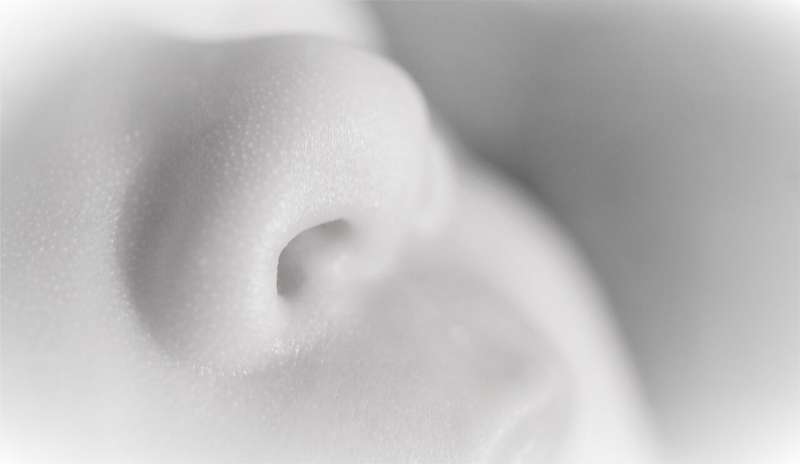This article has been reviewed according to Science X's editorial process and policies. Editors have highlighted the following attributes while ensuring the content's credibility:
fact-checked
peer-reviewed publication
trusted source
proofread
Human scent receptors could help 'sniff out' nerve gases in new sensor

By some estimates, the human nose can detect up to a trillion different smells with its hundreds of scent receptors. But even just catching a quick whiff of certain chemicals known as nerve agents can be lethal, even in tiny amounts. Researchers reporting in ACS Sensors have developed a sensitive and selective nerve gas sensor using these human scent receptors. It reliably detected a substitute for deadly sarin gas in simulated tests.
Nerve gases are often very potent, requiring highly sensitive sensors to detect them quickly and accurately. One method of boosting sensitivity combines human scent receptors with nanomaterials such as reduced graphene oxide to create a "bioelectronic nose." But since these nerve gases are still highly dangerous even in laboratory settings, many scientists rely on safer, substitute molecules instead.
In the case of the sarin or soman nerve agents, dimethyl methylphosphonate (DMMP) is a common replacement. Previously, the receptor protein hOR2T7 has been used to detect DMMP, but it could only do so when the nerve agent substitute was in a liquid form, rather than as a gas. So, Tai Hyun Park, Jyongsik Jang and colleagues wanted to design a "nose" of their own that was both highly sensitive and selective for the gaseous form, using nanodiscs containing the hOR2T7 receptor.
To create nanodiscs, researchers combined hOR2T7 with a membrane scaffold protein and other lipids. The hOR2T7 squeezed inside the scaffold, almost like an inflatable innertube, which kept it upright to readily bind DMMP. The disks were then stuck to the reduced graphene oxide layer of the sensor, which was decorated with nickel atoms to help hold the disks in the right position. Even when exposed to compounds with similar shapes or smells, the sensor only detected DMMP, and was sensitive enough to sense a concentration as low as 0.037 parts per billion.
The team also showed that the device was suitable for real-world scenarios, such as smoky conditions and during repeat tests. Though further experiments are needed, the researchers say that this work shows that human scent receptors are useful components for highly sensitive and selective gas sensors.
More information: Ni-rGO Sensor Combined with Human Olfactory Receptor-Embedded Nanodiscs for Detecting Gas-Phase DMMP as a Simulant of Nerve Agents, ACS Sensors (2023). DOI: 10.1021/acssensors.3c00744 , pubs.acs.org/doi/abs/10.1021/acssensors.3c00744
Journal information: ACS Sensors
Provided by American Chemical Society




















